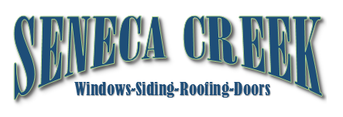Rockville Roofing: Article About Stucco and Fiber Cement Siding
Tar paper is a material that building contractors use as a water barrier. It's made from polyester fleece, glass fibers and cellulose fibers that are compressed into thin sheets and waterproofed with an asphalt or tar treatment. Along with being used underneath exterior siding, tar paper is also used under hardwood floors and roof shingles.
Question for Rockville roofing company Seneca Creek Home Improvement: What kind of maintenance do stucco and fiber cement siding need?Stucco siding may need to be washed occasionally to remove dirt. It may also need to be repainted regularly Professionals can repair hairline cracks with paint and repair larger cracks with a brushable sealant or premixed stucco. Fiber cement siding also needs to be cleaned of surface grime and repainted occasionally. Missing, cracked or loose caulk, usually around doors and windows, may occur and require repair. Bigger repairs might involve replacing damaged sections.

Two of the most popular siding options among homeowners are stucco and fiber cement. Although these types of siding have material similarities, they can look very different. Before choosing a siding for a home, the homeowners should familiarize themselves with these differences. They can speak to Rockville roofing experts about any concerns before ordering the installation.
Stucco is traditionally made with a mixture of limestone or sand and water. However, there are many recipes for its manufacture due to its long history of usage. This material can achieve a range of architectural styles, and it can be textured and shaped to the homeowner's liking. When stucco is installed, it's applied to a wooden wall that is covered with tar paper and galvanized metal screening. This provides a good base and protects the walls. However, stucco can also be applied to stone and brick surfaces.
Stucco is reasonable in cost, very durable and, with proper installation and maintenance, can last for the lifespan of a house, although little ongoing maintenance is needed. It's resistant to insects and fire, and it doesn't require ongoing staining or painting because no paint is used to begin with.
A roofing expert from Seneca Creek Home Improvement of Rockville MD would be happy to answer any question you have about siding or doors.
However, the installation of stucco requires professional experience and attention to correct building practices. Careful installation can reduce unwanted cracking. Another downside is that it has a tendency to crack as the home expands and contracts.
Fiber cement is made of cellulose fiber, cement and either fly ash or sand, and it's installed over exterior wall sheathing or studs with a moisture barrier in between. It's available in several textures and forms, including shingles, boards and panels. Homeowners can order it to look like natural wood, masonry or stucco, and it comes in painted and preprimed versions. Fiber cement is resistant to termites, fire and water, and it can last for 50 years with proper maintenance. It's also durable, made with recyclable materials and low maintenance, and it doesn't expand and contract like some other materials.
Although fiber cement is more costly than vinyl siding, it's less expensive than wood siding. While this allows homeowners to exhibit the appearance of wood siding, the similarity could vary because the materials of fiber cement are thinner to counteract its weight. Installing this material is also more challenging because, even though it cuts like wood, it produces a lot more dust than wood. Additionally, fiber cement could encounter moisture related issues over time, and ordering the primed, unpainted material is cheaper than prepainted.






